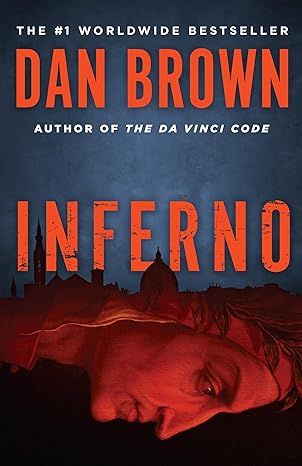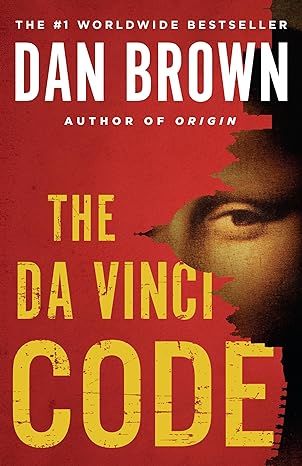Inferno (Robert Langdon)Audio CD
4.2
-
82,907 ratings
#1 WORLDWIDE BESTSELLER • Harvard professor of symbology Robert Langdon awakens in an Italian hospital, disoriented and with no recollection of the past thirty-six hours, including the origin of the macabre object hidden in his belongings.
“One hell of a good read.... As close as a book can come to a summertime cinematic blockbuster.” —USA Today
“A diverting thriller.” —Entertainment Weekly
With a relentless female assassin trailing them through Florence, he and his resourceful doctor, Sienna Brooks, are forced to flee.
Embarking on a harrowing journey, they must unravel a series of codes, which are the work of a brilliant scientist whose obsession with the end of the world is matched only by his passion for one of the most influential masterpieces ever written, Dante Alighieri's The Inferno.
Dan Brown has raised the bar yet again, combining classical Italian art, history, and literature with cutting-edge science in this captivating thriller.
Kindle
$11.99
Available instantly
Audiobook
$0.00
with membership trial
Hardcover
$16.61
Paperback
$16.00
Ships from
Amazon.com
Payment
Secure transaction
ISBN-10
0804172269
ISBN-13
978-0804172264
Print length
576 pages
Language
English
Publisher
Anchor
Publication date
May 05, 2014
Dimensions
5.1 x 0.97 x 7.9 inches
Item weight
14.4 ounces
Popular Highlights in this book
The darkest places in hell are reserved for those who maintain their neutrality in times of moral crisis.
Highlighted by 6,929 Kindle readers
The darkest places in hell are reserved for those who maintain their neutrality in times of moral crisis.
Highlighted by 6,370 Kindle readers
The decisions of our past are the architects of our present. The decisions of the provost’s
Highlighted by 480 Kindle readers
Product details
ASIN :
B00AXIZ4TQ
File size :
6324 KB
Text-to-speech :
Enabled
Screen reader :
Supported
Enhanced typesetting :
Enabled
X-Ray :
Enabled
Word wise :
Enabled
Editorial Reviews
“A book-length scavenger hunt.... Jam-packed with tricks.” —The New York Times
“Fast, clever, well-informed.... Dan Brown is the master of the intellectual cliffhanger.” —The Wall Street Journal
“One hell of a good read.... As close as a book can come to a summertime cinematic blockbuster.” —USA Today
“A diverting thriller.” —Entertainment Weekly
“Brown isn’t just a novelist; he’s a crossover pop culture sensation.... Inferno is the kind of satisfying escapist read that summers were made for.” —The Boston Globe
“Harrowing fun threaded with coded messages, art history, science, and imminent doom.” —Daily News (New York)
“[Brown is] the planet’s most dastardly thriller writer.... Inferno moves with...velocity, excitement, and fun.” —The Independent (UK)
“An adventure ride through a literary text.... [A] sweeping spectacle.” —Pittsburgh Post-Gazette
“A fast and furious race.” —The Plain Dealer
"A master of the breathless, puzzle-driven thriller.” —Richmond Times-Dispatch
“What Brown does in a way that appeals to millions of people around the world is tell stories that remind us there’s more to the world than meets the eye.” —The Huffington Post
Sample
Chapter 1
The memories materialized slowly . . . like bubbles surfacing from the darkness of a bottomless well.
A veiled woman.
Robert Langdon gazed at her across a river whose churning waters ran red with blood. On the far bank, the woman stood facing him, motionless, solemn, her face hidden by a shroud. In her hand she gripped a blue tainia cloth, which she now raised in honor of the sea of corpses at her feet. The smell of death hung everywhere.
Seek, the woman whispered. And ye shall find.
Langdon heard the words as if she had spoken them inside his head. “Who are you?” he called out, but his voice made no sound.
Time grows short, she whispered. Seek and find.
Langdon took a step toward the river, but he could see the waters were bloodred and too deep to traverse. When Langdon raised his eyes again to the veiled woman, the bodies at her feet had multiplied. There were hundreds of them now, maybe thousands, some still alive, writhing in agony, dying unthinkable deaths . . . consumed by fire, buried in feces, devouring one another. He could hear the mournful cries of human suffering echoing across the water.
The woman moved toward him, holding out her slender hands, as if beckoning for help.
“Who are you?!” Langdon again shouted.
In response, the woman reached up and slowly lifted the veil from her face. She was strikingly beautiful, and yet older than Langdon had imagined—in her sixties perhaps, stately and strong, like a timeless statue. She had a sternly set jaw, deep soulful eyes, and long, silver-gray hair that cascaded over her shoulders in ringlets. An amulet of lapis lazuli hung around her neck—a single snake coiled around a staff.
Langdon sensed he knew her . . . trusted her. But how? Why?
She pointed now to a writhing pair of legs, which protruded upside down from the earth, apparently belonging to some poor soul who had been buried headfirst to his waist. The man’s pale thigh bore a single letter—written in mud—R.
R? Langdon thought, uncertain. As in . . . Robert? “Is that . . . me?”
The woman’s face revealed nothing. Seek and find, she repeated.
Without warning, she began radiating a white light . . . brighter and brighter. Her entire body started vibrating intensely, and then, in a rush of thunder, she exploded into a thousand splintering shards of light.
Langdon bolted awake, shouting.
The room was bright. He was alone. The sharp smell of medicinal alcohol hung in the air, and somewhere a machine pinged in quiet rhythm with his heart. Langdon tried to move his right arm, but a sharp pain restrained him. He looked down and saw an IV tugging at the skin of his forearm.
His pulse quickened, and the machines kept pace, pinging more rapidly.
Where am I? What happened?
The back of Langdon’s head throbbed, a gnawing pain. Gingerly, he reached up with his free arm and touched his scalp, trying to locate the source of his headache. Beneath his matted hair, he found the hard nubs of a dozen or so stitches caked with dried blood.
He closed his eyes, trying to remember an accident.
Nothing. A total blank.
Think.
Only darkness.
A man in scrubs hurried in, apparently alerted by Langdon’s racing heart monitor. He had a shaggy beard, bushy mustache, and gentle eyes that radiated a thoughtful calm beneath his overgrown eyebrows.
“What . . . happened?” Langdon managed. “Did I have an accident?”
The bearded man put a finger to his lips and then rushed out, calling for someone down the hall.
Langdon turned his head, but the movement sent a spike of pain radiating through his skull. He took deep breaths and let the pain pass. Then, very gently and methodically, he surveyed his sterile surroundings.
The hospital room had a single bed. No flowers. No cards. Langdon saw his clothes on a nearby counter, folded inside a clear plastic bag. They were covered with blood.
My God. It must have been bad.
Now Langdon rotated his head very slowly toward the window beside his bed. It was dark outside. Night. All Langdon could see in the glass was his own reflection—an ashen stranger, pale and weary, attached to tubes and wires, surrounded by medical equipment.
Voices approached in the hall, and Langdon turned his gaze back toward the room. The doctor returned, now accompanied by a woman.
She appeared to be in her early thirties. She wore blue scrubs and had tied her blond hair back in a thick ponytail that swung behind her as she walked.
“I’m Dr. Sienna Brooks,” she said, giving Langdon a smile as she entered. “I’ll be working with Dr. Marconi tonight.”
Langdon nodded weakly.
Tall and lissome, Dr. Brooks moved with the assertive gait of an athlete. Even in shapeless scrubs, she had a willowy elegance about her. Despite the absence of any makeup that Langdon could see, her complexion appeared unusually smooth, the only blemish a tiny beauty mark just above her lips. Her eyes, though a gentle brown, seemed unusually penetrating, as if they had witnessed a profundity of experience rarely encountered by a person her age.
“Dr. Marconi doesn’t speak much English,” she said, sitting down beside him, “and he asked me to fill out your admittance form.” She gave him another smile.
“Thanks,” Langdon croaked.
“Okay,” she began, her tone businesslike. “What is your name?”
It took him a moment. “Robert . . . Langdon.”
She shone a penlight in Langdon’s eyes. “Occupation?”
This information surfaced even more slowly. “Professor. Art history . . . and symbology. Harvard University.”
Dr. Brooks lowered the light, looking startled. The doctor with the bushy eyebrows looked equally surprised.
“You’re . . . an American?”
Langdon gave her a confused look.
“It’s just . . .” She hesitated. “You had no identification when you arrived tonight. You were wearing Harris Tweed and Somerset loafers, so we guessed British.”
“I’m American,” Langdon assured her, too exhausted to explain his preference for well-tailored clothing.
“Any pain?”
“My head,” Langdon replied, his throbbing skull only made worse by the bright penlight. Thankfully, she now pocketed it, taking Langdon’s wrist and checking his pulse.
“You woke up shouting,” the woman said. “Do you remember why?”
Langdon flashed again on the strange vision of the veiled woman surrounded by writhing bodies. Seek and ye shall find. “I was having a nightmare.”
“About?”
Langdon told her.
Dr. Brooks’s expression remained neutral as she made notes on a clipboard. “Any idea what might have sparked such a frightening vision?”
Langdon probed his memory and then shook his head, which pounded in protest.
“Okay, Mr. Langdon,” she said, still writing, “a couple of routine questions for you. What day of the week is it?”
Langdon thought for a moment. “It’s Saturday. I remember earlier today walking across campus . . . going to an afternoon lecture series, and then . . . that’s pretty much the last thing I remember. Did I fall?”
“We’ll get to that. Do you know where you are?”
Langdon took his best guess. “Massachusetts General Hospital?”
Dr. Brooks made another note. “And is there someone we should call for you? Wife? Children?”
“Nobody,” Langdon replied instinctively. He had always enjoyed the solitude and independence provided him by his chosen life of bachelorhood, although he had to admit, in his current situation, he’d prefer to have a familiar face at his side. “There are some colleagues I could call, but I’m fine.”
Dr. Brooks finished writing, and the older doctor approached. Smoothing back his bushy eyebrows, he produced a small voice recorder from his pocket and showed it to Dr. Brooks. She nodded in understanding and turned back to her patient.
“Mr. Langdon, when you arrived tonight, you were mumbling something over and over.” She glanced at Dr. Marconi, who held up the digital recorder and pressed a button.
A recording began to play, and Langdon heard his own groggy voice, repeatedly muttering the same phrase: “Ve . . . sorry. Ve . . . sorry.”
“It sounds to me,” the woman said, “like you’re saying, ‘Very sorry. Very sorry.’ ”
Langdon agreed, and yet he had no recollection of it.
Dr. Brooks fixed him with a disquietingly intense stare. “Do you have any idea why you’d be saying this? Are you sorry about something?”
As Langdon probed the dark recesses of his memory, he again saw the veiled woman. She was standing on the banks of a bloodred river surrounded by bodies. The stench of death returned.
Langdon was overcome by a sudden, instinctive sense of danger . . . not just for himself . . . but for everyone. The pinging of his heart monitor accelerated rapidly. His muscles tightened, and he tried to sit up.
Dr. Brooks quickly placed a firm hand on Langdon’s sternum, forcing him back down. She shot a glance at the bearded doctor, who walked over to a nearby counter and began preparing something.
Dr. Brooks hovered over Langdon, whispering now. “Mr. Langdon, anxiety is common with brain injuries, but you need to keep your pulse rate down. No movement. No excitement. Just lie still and rest. You’ll be okay. Your memory will come back slowly.”
The doctor returned now with a syringe, which he handed to Dr. Brooks. She injected its contents into Langdon’s IV.
“Just a mild sedative to calm you down,” she explained, “and also to help with the pain.” She stood to go. “You’ll be fine, Mr. Langdon. Just sleep. If you need anything, press the button on your bedside.”
She turned out the light and departed with the bearded doctor.
In the darkness, Langdon felt the drugs washing through his system almost instantly, dragging his body back down into that deep well from which he had emerged. He fought the feeling, forcing his eyes open in the darkness of his room. He tried to sit up, but his body felt like cement.
As Langdon shifted, he found himself again facing the window. The lights were out, and in the dark glass, his own reflection had disappeared, replaced by an illuminated skyline in the distance.
Amid a contour of spires and domes, a single regal facade dominated Langdon’s field of view. The building was an imposing stone fortress with a notched parapet and a three-hundred-foot tower that swelled near the top, bulging outward into a massive machicolated battlement.
Langdon sat bolt upright in bed, pain exploding in his head. He fought off the searing throb and fixed his gaze on the tower.
Langdon knew the medieval structure well.
It was unique in the world.
Unfortunately, it was also located four thousand miles from Massachusetts.
Outside his window, hidden in the shadows of the Via Torregalli, a powerfully built woman effortlessly unstraddled her BMW motorcycle and advanced with the intensity of a panther stalking its prey. Her gaze was sharp. Her close-cropped hair—styled into spikes—stood out against the upturned collar of her black leather riding suit. She checked her silenced weapon, and stared up at the window where Robert Langdon’s light had just gone out.
Earlier tonight her original mission had gone horribly awry.
The coo of a single dove had changed everything.
Now she had come to make it right.
Read more
About the authors
Dan Brown
Dan Brown is the bestselling author of Digital Fortress, Deception Point, Angels and Demons, The Da Vinci Code, The Lost Symbol and most recently, Inferno. Three of his Robert Langdon novels have been adapted for the screen by Ron Howard, starring Tom Hanks. They have all been international blockbusters.
His new Robert Langdon thriller, Origin will be out on 3rd October 2017.
Dan Brown is a graduate of Amherst College and Phillips Exeter Academy, where he has taught English and Creative Writing. He lives in New England.
Read more
Reviews
Customer reviews
4.2 out of 5
82,907 global ratings
Israel Drazin
5
Another runaway and informative thriller
Reviewed in the United States on May 16, 2013
Verified Purchase
This Dan Brown sixth thriller will be a best seller. Brown, as is well known, is the author of one of the most widely read novels of our time The Da Vinci Code. His worldwide sales have exceeded eighty million copies. In an interview on the comedy Stephen Colbert program, Brown responded to Colbert's remark that his sales were exceeded by the Bible with humor, smilingly saying, "But the Bible has been on sale much longer."
Brown's novels are more than unraveling puzzles and decoding symbols. Besides being a riveting and suspenseful tale of a chase where people are trying to stop Robert Langdon from discovering a secret that in some way involves misdeeds by the Roman Catholic church, which appears to perform acts that harm people and society, Brown's books inform readers about history, classical books, cities, famous people, symbols they see frequently but do not know their significance, like the pyramid and eye on dollar bills in the Da Vinci tale or the mask with the large beak that we frequently see in carnivals, which is explained in this book.
In this novel, Professor Langdon of Harvard University, an expert on art and symbols, wakes in a hospital in Florence, Italy, learning that he had been shot in the head but is unable to recall what happened during the past two days since he was walking across the campus in Massachusetts. He has a vision of a strikingly beautiful woman with silver hair, a woman in her sixties, who is telling him "seek and find." One of his doctors at the hospital is Sienna Brooks, a beautiful woman, in her early thirties. She tells Langdon that he was found carrying no identification repeatedly muttering "Ve...sorry." Langdon learns that Brooks is a genius with a 206 IQ and that people keep trying to kill him. He doesn't know that Brooks is hiding from something or someone. He realizes that the only way to save himself is by finding out what happened during the two days, what he was trying to do and, if it makes sense, do it. Circumstances make it necessary for Brooks to accompany him on his search and they race to escape from what seems to be everyone trying to kill them. All of this happened in the opening of this thriller.
Following Langdon during the quest, readers learn much about the classic The Divine Comedy by Dante Alighieri, which is not a comedy as we understand the term today, but a book written for mass audiences about Hell, a landscape rich in symbolism and iconography, a book that so scared people who read it that the attendance at churches tripled with the fearful after the book's release. We read also about Sandro Botticelli's painting La Mappa in which he depicted the map of Dante's hell, a painting that like The Divine Comedy has a prominent part in the novel. Among much else, we are told about the city of Florence, the city from which Dante was expelled, whose walls were built in 1326 a city that contains paintings with codes hidden in them; Michelangelo and some of his paintings, including a painting of the evil biblical Haman being crucified, like Jesus, and not hung as the Bible states, a painting placed in the Vatican; and other famous painters and artists, as well as Lorenzo de' Medici, the patron of many greats from Da Vinci to Galileo to Botticelli, who commissioned Botticelli to paint a provocative painting to hang over his cousin's marital bed as a wedding gift.
The villains in this tale raise a host of thought provoking questions that will interest readers. The villains seem to have good intentions and seem to base what they are doing on moral grounds. Readers will find themselves thinking about what distorted the righteous basis and honest concerns. But, most of all, like Langdon, they will enjoy unraveling hidden symbols and will enjoy the drama, the chase, and the results.
Read more
5 people found this helpful
THREEKAY
5
Transhumanism Cleverly Introduced to the World
Reviewed in the United States on November 26, 2014
Verified Purchase
The favorite author of the new generation readers has once again struck with his powerful pen, a mesmerizing and wonderful fiction, worth reading many times.
Robert Langdon, the American professor, highly talented and expert in mythological symbols of the old world is called upon by the World Health Organization (WHO) to break the secret code of the famous painting of Dante’s Map of Hell also referred as La Mappa dell’Inferno, to unveil a dangerous plot by a renowned genetic engineering scientist Bertrand Zobrist, to destroy human race. The plot opens in Florence, Italy and winds up in Istanbul, Turkey passing through a series of twists and turns in tracing the final destination of the secret place and date where the scientist proposes to release the dangerous virus to the world, in a Sunken Palace somewhere in the middle of the world. In this journey, the reader is taken through a beautiful journey in gaining exquisite knowledge of Dante Alleghieri’s famous work “The Divine Comedy” composed in early 1300s, wherein he describes his great journey through the various stages of the so-called Hell in Christian religion. This great composition is the most widely read and respected in the world. Dante’s interpretation of his Hell and the Great Plague of Europe in the 1300s (also referred as Black Death) were contemplated to arrive at a disturbing fact that the World is over-populated as of now and needs to downsize the existing population by some means as fast as possible to help the human race to continue for some more centuries. This called for Bertrand’s wild and brilliant idea of creation of highly virulent air-borne vector virus that if enters the human body renders him/her infertile forever. This according to the scientist is the only immediate solution to curb the ever increasing human population that shall lead to widespread calamities, famines, starvation deaths and disasters in the near future. His great leadership on the Transhumanist movement whose fundamental tenets is that we as humans have a moral obligation to participate in our own evolutionary process and use our technologies to create healthier, stronger and intelligent human beings without waiting for the long periods of natural evolutionary process. However, Robert Langdon with the help of WHO and Sienna Brooks, lover of Bertrand Zobrist and a highly intelligent doctor do find the place and date of the release of virus. But will they be able to save the world? One must read this wonderful work of Dan Brown to catch the excitement!
Pros: Some of the greatest places of interest in art and architecture across Italy, Venice and Turkey have been widely described with a lot of information on the history and significance of each and every great monument built that stands as a mark of human intelligence in the ancient period. The author’s outstanding talent in his research abilities and zeal to pursue world history through art and architecture is absolutely unmatched as of today. The reader will remain hypnotized and carried right into the middle of the scenes as long he/she is reading the book. The description of Piazza Del Duomo, the statue of David, Vasari’s paintings, cylinder seals, Death masks, the Medici, Palazzo Vecchio’s Hall of Five Hundred, Boboli gardens, Buontalenti Grotto, the Vasari Corridor, Uffizi Gallery, Mappa Mundi, the church of Dante, the Baptistry of San Giovanni, Gates of Paradise, The Rod of Asclepius, the grandeur of Vatican city, the Doge’s Palace, St.Mark’s Basilica, the Transhumanist Philosophy, the cupola of San Simeone Piccolo, story of St. Lucia’s bones, the origin of the word ‘quarantine’, the Grand Canal of Venice, the Venetian Gothic Architecture, the Byzantine architecture, the history of Horses of St.Mark’s, the Pala d’Oro, the Bosporus Waterway of Istanbul, the mosque of Hagia Sophia (considered as the eighth world wonder), Istanbul’s 300 yr old Spice Bazaar, the tomb of Henricus Dandalo, the Sunken Palace and finally the Dante Symphony by Franz Liszt are some of my interesting topics for study in this book.
Cons: The fact that the great American professor was mentally manipulated through a series of illusions by the World Health Organization to help them decode the secret lying behind in Dante’s painting to save the world was not acceptable to me. Though Bertrand’s vision and cause is worth a standing ovation, the means he chose to achieve the goal seemed to be wrong.
My favourite quote in the book : “The decisions of our past are the architects of our present”
My rating is 5 out of 5
Read more
3 people found this helpful
RaksGato
5
Another winner in the Robert Langdon series.
Reviewed in the United States on July 29, 2013
Verified Purchase
Dan Brown's newest novel, "Inferno," sends symbolist Robert Langdon on another mad dash adventure stretching from the Mediterranean to the Bosporus. I've given it a 5-star rating, because, as usual, Brown delivers on all fronts: interesting subject matter that is painstakingly researched, compelling characterizations, action squared, a plot that moves easily from one scene to the next and drags you along no matter how late it is, inclusion of interesting historical facts, lush settings, and a denouement that leaves you thinking not only about the novel, but about real life. And, of course, top notch proofing and editing.
In other action thrillers, I sometimes feel as though I'm reading a movie script. The action is the focus, rather than the plot and/or characters. Not so with Brown. Here's an author who can handle the never-ending action, the constant danger, the exhausting, breakneck chase, the result of which will not only determine the life and death of the main characters, but perhaps the survival of human life on earth as we know it. The reader WANTS to go on this ride. Wants to feel the unrelenting adrenaline rush, the heart stopping suspense. You want it; you get it; you love it.
For those Robert Langdon fans, this time the action races through the the famed houses of worship of Italy and Turkey, chasing clues from Dante's 14th Century epic poem, "The Divine Comedy," and specifically, the portion titled "Inferno." However, this time there is no religious conspiracy, no sacred quest. This time the subject matter involves the predicament we all find ourselves in: burgeoning world population vs. decreasing resources.
In my youth, there was a movement known by the acronym "ZPG." Over the past couple years, whenever the overpopulation issue is mentioned, I've asked if anyone remembers what this stood for. Anyone under the age of about 45 or so does not. (Zero Population Growth) So this novel hit on an issue that has been of concern to me now for over 4 decades. But, that's another conversation.
The book is nearly 500 pages long (462 to be exact). Long read. This has been a busy month for me, but I still managed to read every day -- in fact, I needed to read every day, as this book is full of the most fascinating twists and turns. Not only twists in the plots, but actually twists in who the individual characters are. Brown masterfully doles out bits and pieces of the solution to his puzzle all along the way, but still manages to surprise you when a character turns out to be the exact opposite of what you believed him or her to be. I'll admit to having one huge, and upon rereading, obvious clue go right over my head. When that part of the revelation came, I had to go back and do a -head/desk- over my oversight! :-) Tricky. And I loved it.
So, I didn't read it all in one day or even in one week. Brown's novels are works to be savored. There is so much fascinating history, interesting concepts and wonderful mysteries that I have to stop every so often just to properly absorb what I've read. I need to taste the delightful flavor of each morsel of the literary puzzle. No. I take my time with Brown's novels. I drag out every Lucius paragraph, longing for the ultimate conclusion all while hoping it will never end.
So, don't I have any complaints? Now, if you usually read my reviews, there usually something.
For instance, starting on page 300, when Langdon and others are in the boat in Venice and come to the realization that the "plucker of bones of the blind" in Zobrist's poem referred to Saint Lucia, and their boatman began relating the legend of Saint Lucia, why didn't they ask him the identity of the doge who cut the heads off horses (another reference in the poem)?
My other disappointment is in the extremely short timeline. If one starts with Langdon awaking in a hospital with memory loss, there are less than 2 days (actually less than 36) hours, I believe, in which this madcap race through the best known tourists sites of Italy to the Haga Sophia and beyond in Istanbul. It includes chases, conversations, motorbikes, boats, and just like Steve Martin and John Candy -- planes, trains and automobiles! Langdon has an injury and short term memory loss. There are two well organized forces chasing him. Yet, in all those hours, which are painstakingly chronicled, the only mention of eating or sleeping comes at the bottom of page 375. Langdon does get to splash some water on his face and change clothes back about chapter 7, but this is after what has already been a long (and for Langdon) forgotten night in a country he cannot remember either traveling to or why he might have done so.
While I certainly don't expect a break in the action for the bathroom, I do expect to see scene that includes a hastily eaten meal, a quick shower -- something to indicate there was time to brush the teeth, revive the system with food, clean up. Pretty basic physical requirements for someone who will be in close, very close, contact with others throughout this adventure. I needed to see something to allow me to believe that an injured man suffering from retrograde amnesia would have the the physical and emotional stamina to do what he does, at the speed of light, for a prolonged time. I was also surprised that only one character in the novel -- and there are several who either know him or know of him -- notices that Langdon does not look his usual dapper self. I found the timeline exciting -- but maybe not so believable as one that allowed even one more day and at least one meal!
However, Brown's descriptions of the places visited in the novel are rich and full. One of my favorite sections comes on page 300, the third paragraph in Chapter 84:
"This was a world divided, a city of opposing forces -- religious, secular; ancient, modern; Eastern, Western. Straddling the geographic boundary between Europe and Asia, this timeless city was quite literally the bridge from the Old World . . . to a world that was even older.
Istanbul."
You run this race thinking you know what's at stake and what will happen if the 'good guys' don't win. You don't. Believe me, the revelations never stop coming. And, best of all, it will make you think.
Read more
8 people found this helpful
Ed Barton
5
Perhaps the Best in the 4 Book Langdon Series
Reviewed in the United States on May 27, 2013
Verified Purchase
While many reviewers seemed to have a very negative view of the book, and certainly with some reason - to be discussed, this is perhaps the best of the four "Robert Langdon" books written by Brown. It managed to earn that praise based on the following factors:
*The last 150 pages of twists, turns, thrills and shocks *The topical and real socio-economic factors discussed *The plausible science
Based on a transhumanist's fascination with the Divine Comedy of Dante, the book - especially the first 300 pages - follows the relatively well-worn theme of the genre. In fact, I would make the argument that the first 250 pages are almost a bit of a slog through the book. I actually put it down and went to bed - which is a first for a Dan Brown book. There are the typical chases, character development,integration of the sights and sounds of Florence, and some (but less) symbology that permeated the original series.
Stylistically, it follows Dan Brown's approach of short chapters, multiple fonts, a lot of running around,"hyper-activity", and relatively long soliloquies when there is actual meaningful dialogue. If you didn't like the style before, there's no reason you will like this book any better. In fact, I would argue that this book contains fewer "ah-ha" moments in the first 300 pages than any other of the series. Even the antagonist - a figure seemingly inspired by an Ian Flemming book - seems somewhat contrived and rote.
While the socio-economic elements are thought provoking, the methodology that is used to convey them is sometimes a little preachy, and similar to Brown's other books, the author appears to be conveying many of his own beliefs and ethics into the discussion. The science is generally glossed over (at least the medical piece), but is interesting and plausible enough to keep the reader engaged - unlike some of his other works.
Endeavoring to avoid spoiling the plot at all, I will state that the last 150 pages are masterful thriller. There are more curve balls thrown than you will find at an MLB game, and continuing the analogy, the crafty veteran pulled out the game when you really thought he had nothing left in the tank. The entire last 2-3 hours of reading was classic thriller - and the book was near impossible to put down. The "moral" of the story is topical and will get you thinking about real world issues - unlike the Da Vinci Code or the Lost Symbol, and if read with open eyes, the reader will come across with having been educated, entertained and challenged in their beliefs.
The book is entertaining enough for the first 300 pages, and definitely worth the price of admission to get to the last 150. It was those last 150 pages and the deeper messages that came through that leveraged this book from a 4 to a 5 star review.
Read more
Diana Faillace Von Behren
4
Formula for Commercial Success
Reviewed in the United States on May 24, 2013
Verified Purchase
Ah well! The battle rages on. The premise is a simple one. Is it commerce? Or is it art? Let's put it this way, if you want to actually make an extremely lucrative living out of writing books, author Dan Brown (
9 people found this helpful
Top Dan Brown titles
View allBest Sellers
View all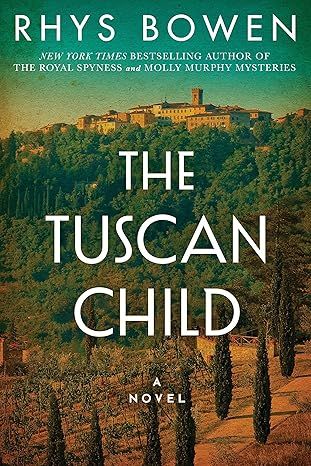
The Tuscan Child
4.2
-
100,022
$8.39
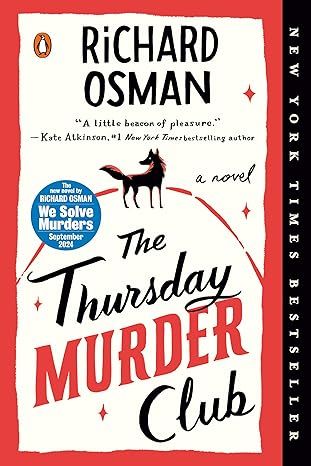
The Thursday Murder Club: A Novel (A Thursday Murder Club Mystery)
4.3
-
155,575
$6.33
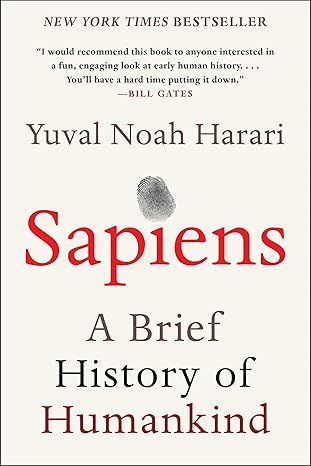
Sapiens: A Brief History of Humankind
4.6
-
140,302
$13.49
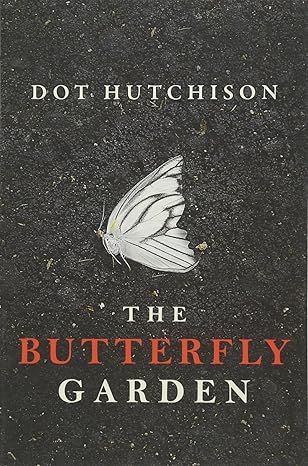
The Butterfly Garden (The Collector, 1)
4.3
-
88,556
$9.59

Things We Hide from the Light (Knockemout Series, 2)
4.4
-
94,890
$11.66
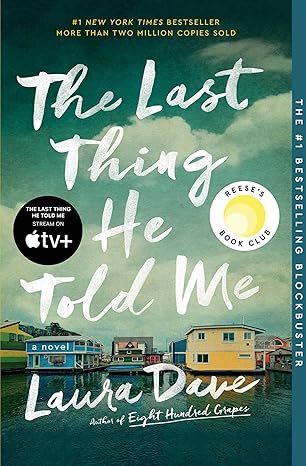
The Last Thing He Told Me: A Novel
4.3
-
154,085
$2.99

The Perfect Marriage: A Completely Gripping Psychological Suspense
4.3
-
143,196
$9.47
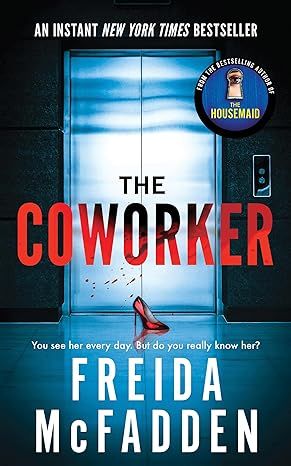
The Coworker
4.1
-
80,003
$13.48

First Lie Wins: A Novel (Random House Large Print)
4.3
-
54,062
$14.99

Mile High (Windy City Series Book 1)
4.4
-
59,745
$16.19

Layla
4.2
-
107,613
$8.99
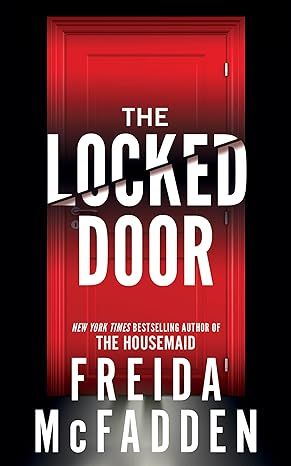
The Locked Door
4.4
-
94,673
$8.53
